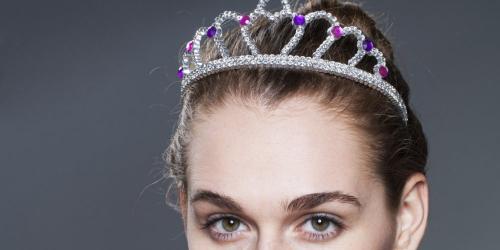3 laundry per week is what 70% of us practice without asking too many questions. To avoid unpleasant surprises and unfortunate gestures, it is better to have the right info. It's clean !
Powdered laundry for the white, there is no better!
TRUE . Powdered detergent, or premeasured tablets, contains bleaching agents and optical brighteners that maintain the brightness of the white linen, as well as gluttonous enzymes that eat stubborn stains (blood, tomato, coffee ...). resistant textiles (cotton, linen ...). Another advantage: it rejects three times less surfactants in the environment than other detergents, contains fewer allergens and is easier to dose. Liquid laundry is reserved for colored textiles (it does not contain whitening agents which flatten them), synthetics, and programs at low temperatures.
Nuts washing: eco-friendly, but not very effective
TRUE and FALSE : 100% natural, these nuts harvested on the famous "soap tree" contain saponin, a kind of natural detergent that acts in contact with water, top when we want to focus on green maintenance methods. If 3 or 4 whole nuts enclosed in a cotton or linen bag, and slipped into the drum, seem to have an efficiency comparable to that of industrial chemical detergents on a lightly soiled cloth, it is still necessary to opt for washing programs at 30, 40 and 60 ° C. In cold water, the nuts have no action because it is only in contact with hot water that they release the saponin. To boost their "power" and stalk the stain, we can add 1 or 2 spoonfuls of baking soda in the wash tank.
To wash black, the ideal is the laundry for "dark textiles"
FALSE . Even if its formula contains a fixing agent that protects from disgorging and fading colors (suddenly, it is twice as expensive as a laundry-classic liquid: € 6 / l against € 3), we can do without of this type of laundry to wash his black clothes. Firstly because we can replace it with simple gestures like sorting out your laundry and washing the black ... with black (preferably upside down), choose a short program at 30 ° C, go easy on the liquid laundry. Then because there is a trick to fix the color as would a "special black" laundry, add ½ glass of white wine vinegar in the last rinse water.
My red tablecloth rubbed on my Tunisian blue sky, it's unrecoverable
TRUE and FALSE : If the accidentally dyed textiles are white cotton, you can program a second wash at 40 ° or 60 ° C by adding ½ glass of bleach to the laundry. If it is a question of colored textiles, we will try a machine with a sachet of "bleaching" powder for 1 kg of linen, then we will relive a third time its linen to eliminate all traces of dyeing. The faster we treat the problem, without waiting for the laundry to dry, and therefore fixed the dye, and the more we have the chance to succeed. A tip to make sure that a color is "dyed": apply a pattemouille on the underside of the fabric and put a hot iron on it. If the pattemouille does not tint, it's won!
Softeners protect the laundry but can irritate the skin
TRUE . Repeated washing and drying, through the friction of the fibers and the encrustation of minerals such as limestone, damage the fibers and eventually make them rough and therefore irritating. For sensitive skin, it's not great. Softeners contain agents that "sheath" and "lubricate" damaged textile fibers. The linen is therefore more comfortable to wear. Only the fragrance in these products can cause allergies. The problem can be overcome by using organic softener with plant-based surfactants and the scent of essential oils.
Only washing by hand can not fel my wool sweater
TRUE and FALSE : By hand or machine, the first condition to not felting his sweater is to wash it in cold water using a mild detergent, also called shampoo, free of enzymes that attack the fibers of the wool. If you wash by hand, you avoid soaking your wool for too long, because the water tends to spread the fibers, and is wrung out in a bath towel. If the machine is used, slide it into the drum, upside down, or in a pillowcase, and opt for an ultra-soft spin (600 rpm). And if it is felted despite everything? It is recovered by bathing it in lukewarm water containing glycerine (1 tbsp per 1 liter of water).
At 30 ° C, the laundry is clean, but not disinfected!
TRUE . The current detergents contain active components that act from 30 ° C or cold. This is important because washing at 30 ° C consumes 3 times less energy than washing at 90 ° C (source: Ademe). The problem is that laundry washed at 30 ° C contains only ten times less microorganisms than before washing, against 500 times less with a wash at 40 ° C (source: Institut Pasteur). To eliminate bacteria as much as possible without using bleach that discolour or yellow, we can already start by separating microbial textiles (underwear, tea towels ...) from other clothes, choose a disinfectant laundry (Sanytol, Eau Scarlet) and proceed at least once a year to a full cycle of high temperature vacuum wash using laundry containing bleaches.
It's the spin that made my 3 cm dress shrink
TRUE . Spinning too fast (1,200 to 1,400 revolutions / min) or too long (15 min) tend to felter the fibers (cotton, viscose, wool) and to shrink them, even if the textiles are of quality . To avoid any nasty surprises, read the labels - a bar under the basin indicating the washing temperature invites a gentler mechanical treatment - and reduces the speed to 600 revolutions / min for anything that is not linen bed, table or bath towels.
Dry cleaning is toxic
TRUE . Solvents (perchlorethylene and alternative solvents) used in more than 90% of the pressings to clean, disinfect and degrease the clothes are stuffed with VOCs that continue to evaporate once our clothes are stored in the cabinet. The solution ? Aerate the clothes for 3 or 4 days by removing them from their plastic cover before suspending them or by choosing a dry cleaner (www.sequoiapressing.fr). (Source: Ineris.)
With the stubborn stains!
To eliminate stains sometimes just elbow grease. In some cases, some tips can make our life easier. Is removed...
fat by wetting the fabric with warm water and applying a drop of dishwashing liquid before putting it in the machine.
ink by soaking the stain in milk before delicately rubbing it with white wine vinegar .
lipstick rubbing gently with alcohol to burn.
rust with lemon juice which is left to act before going into the machine.
the wine with talc (not salt) which absorbs the liquid, then rubbing with dry Marseille soap.
blood with a cotton pad soaked with aspirin diluted in water or washing-up liquid, let it work before rubbing and put in machine.
the carrot by dabbing with a rag soaked in alcohol at 90 ° before rinsing and machine wash.
chocolate dabbing with a cloth soaked in white vinegar.


